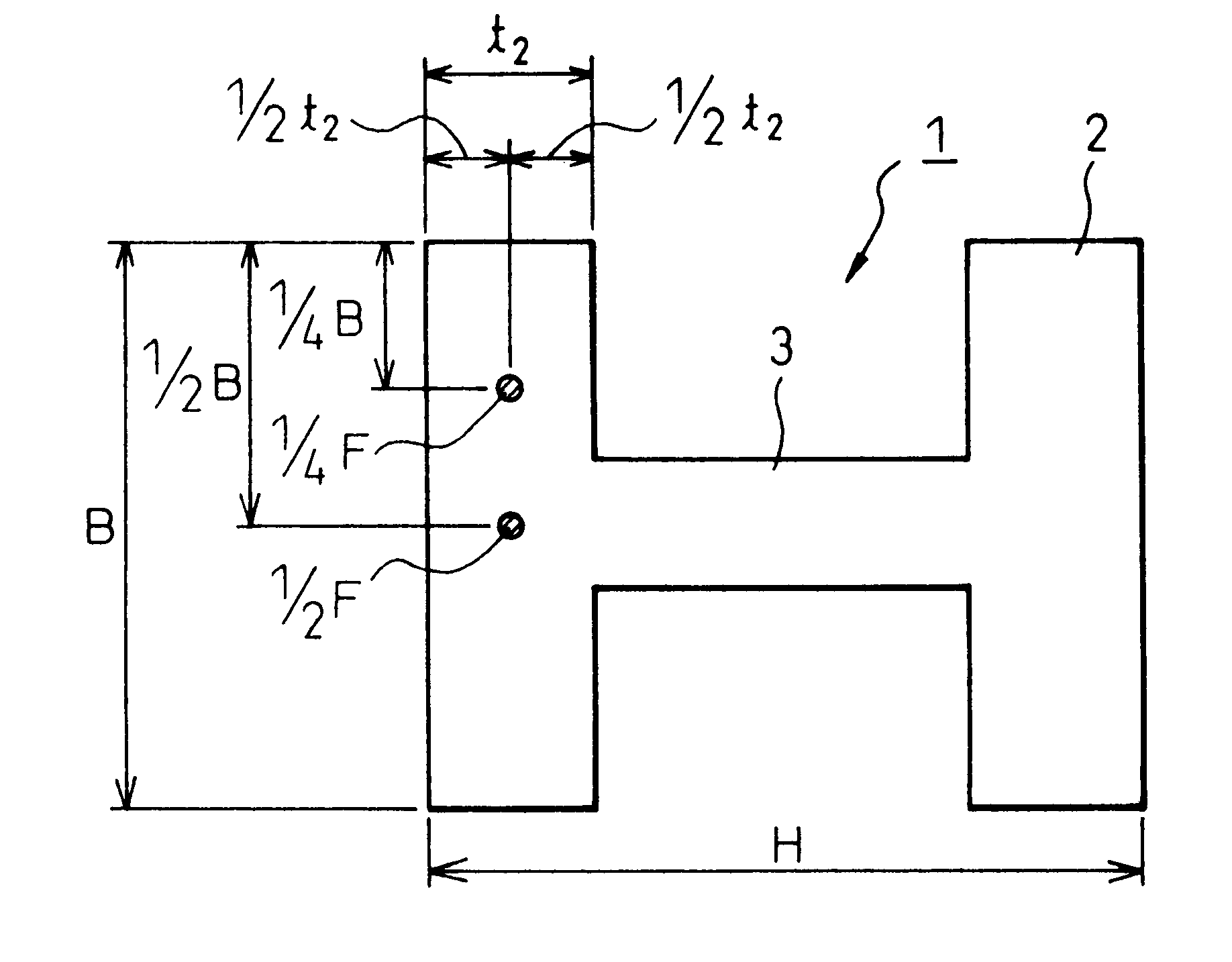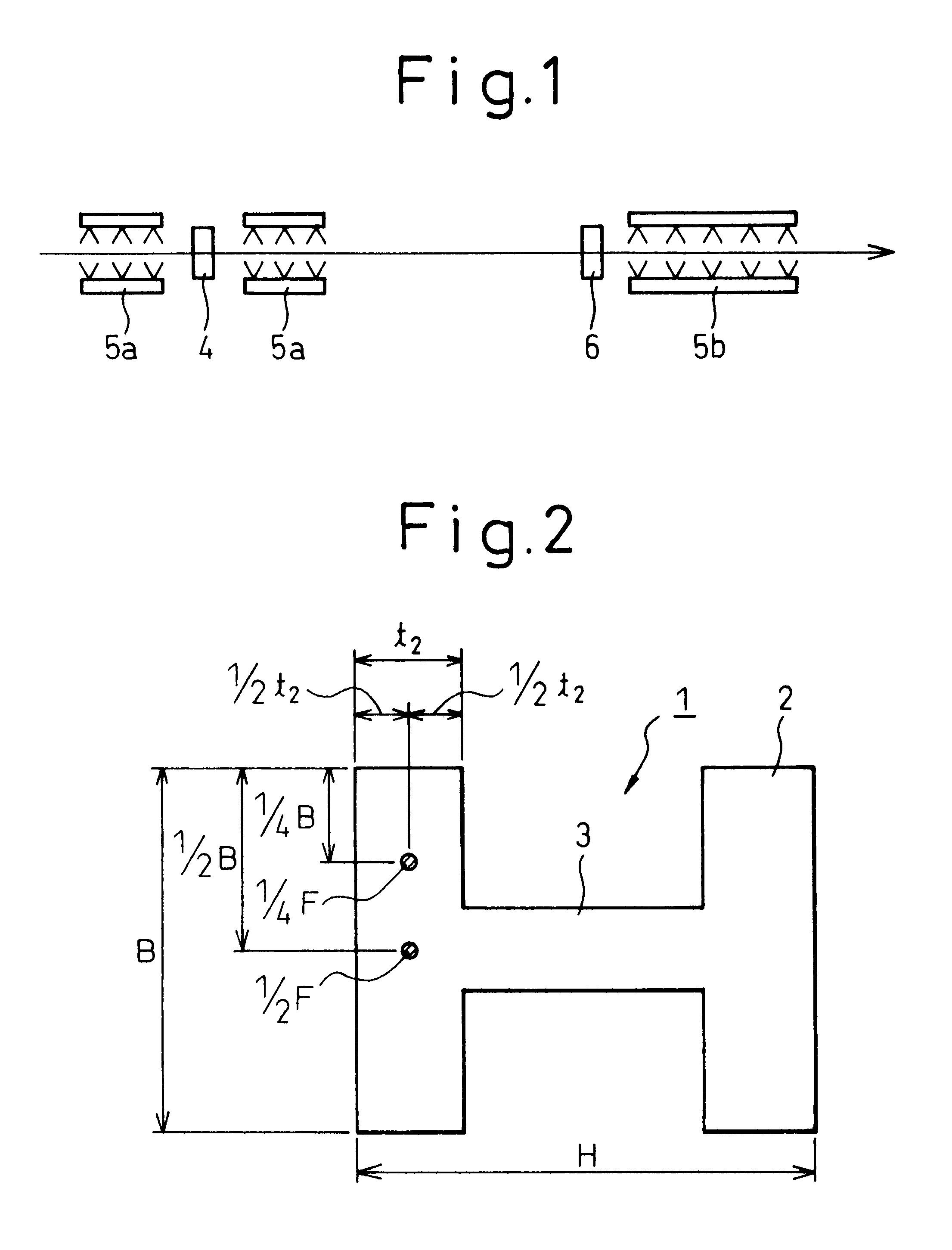High-strength, high-toughness rolled shape steel and method of producing the same
- Summary
- Abstract
- Description
- Claims
- Application Information
AI Technical Summary
Benefits of technology
Problems solved by technology
Method used
Image
Examples
example
For trial production of steel shapes, steel made in a converter was added with alloy, subjected to preliminary deoxidation to regulate the oxygen content of the steel melt, successively added with Ti and Mg alloy, and continuously cast into a 250-300-mm thick slab. Cooling of the slab was controlled by selecting the amount of water of a secondary cooling zone under the mold and the slab extraction rate. The slab was heated to 1300.degree. C. and rolled into an H-shape using a line equipped with a universal rolling mill as shown in FIG. 1, from which diagram the rough rolling process has been omitted. For water cooling between rolling passes, water cooling devices 5a were installed before and after an intermediate universal rolling mill 4 and spray-cooling of the flange outside surfaces and reverse rolling were repeated. For accelerated water cooling, rolling was conducted with a finish universal rolling mill 6, followed by cooling with water. As required depending on the steel type,...
PUM
| Property | Measurement | Unit |
|---|---|---|
| Temperature | aaaaa | aaaaa |
| Fraction | aaaaa | aaaaa |
| Fraction | aaaaa | aaaaa |
Abstract
Description
Claims
Application Information
 Login to View More
Login to View More - R&D
- Intellectual Property
- Life Sciences
- Materials
- Tech Scout
- Unparalleled Data Quality
- Higher Quality Content
- 60% Fewer Hallucinations
Browse by: Latest US Patents, China's latest patents, Technical Efficacy Thesaurus, Application Domain, Technology Topic, Popular Technical Reports.
© 2025 PatSnap. All rights reserved.Legal|Privacy policy|Modern Slavery Act Transparency Statement|Sitemap|About US| Contact US: help@patsnap.com


